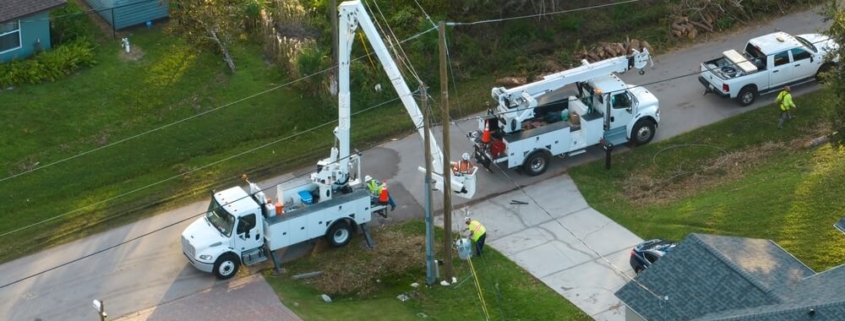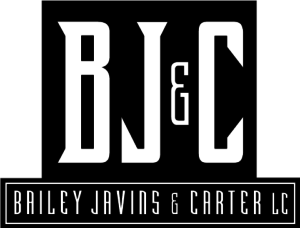Power Lineman Safety – Dangers of Working with High Voltage
The job of a power lineman is fraught with danger. Anyone willing to deal with hundreds and thousands of volts of electricity while being suspended in the air deserves respect. As you might expect, when an accident occurs on one of these job sites, it can be catastrophic. This only heightens the need for as many safety standards and precautions as possible.
If you’re looking to get into one of this country’s most dangerous professions, this would be a strong contender. The Bureau of Labor Statistics reports that the job of electrical line worker ranks among the top ten most dangerous according to its latest figures. Per 100,000 workers, this position has a fatality rate of 18.7, making it the tenth deadliest on the list.
Power Lineman – a Hazardous Occupation
According to the BLS, line installers and repairers are classified as occupations with “serious hazards.” There are approximately 242,000 such positions in the United States, and the job growth rate for this industry is roughly 4%.
Line installers and repairers install or repair electrical power systems as well as telecommunication systems, including fiber optics. They often work at heights and can be exposed to high-voltage electricity. The hours of the work can vary, with some jobs done during inclement weather, and the work can be physically demanding. Some of the most common hazards and risks that these workers face daily include electrocution, falling from heights, confined space injuries, environmental stress, and repetitive motion injuries.
The Dangers of Working with High Voltage
While the number of electrical fatalities has continued to decline over recent years, the risk of working near high voltage power is significant. The most common electrical fatalities occur due to contact with overhead lines and with transformers.
There are four primary types of injuries that can happen due to contact with a strong electrical current:
- Electrocution – This occurs when an electrical current passes through the body, which can be fatal.
- Electric shock – An individual that comes into contact with a current, either directly or indirectly, could suffer severe burns and other long-term consequences.
- Burns – Severe burns can take place from an electrical current as well as from electrical fires and explosions.
- Falls – A worker’s contact with a high voltage current can cause loss of muscle control or unconsciousness, leading to a catastrophic fall.
Power Lineman Safety – Preventing Dangerous Workplace Accidents
We’ve established that working with electricity and cable systems is an inherently dangerous business. So, how can employers keep their workers safe? Unfortunately, not all companies and jobs have a culture that is dedicated to safety. Some new lineman might hear, “that might be what you learned in training, but this is how we do it in the field…”
Safety standards and training are meant to keep power linemen safe, but shortcuts aren’t helping matters. Most contractors are highly committed to safety because it’s clear that an injury or something worse would spell financial disaster for their business. At present, OSHA, the National Electrical Contractors Association (NECA), and the International Brotherhood of Electrical Workers (IBEW) are teaming up to improve lineman and foreman safety with a new partnership.
The current best practices from NECA are a power lineman and contractor’s strongest tool to prevent dangerous workplace accidents. Some of these include:
- Administrative controls – This refers to identifying potential hazards prior to work through a preliminary job site analysis. The contractor should request information in advance when possible.
- Pre-use inspection of rubber protective equipment – Rubber protective equipment keeps power lineman safe from electrical hazards on the job. This equipment should be inspected prior to each use for wear, damage, or contamination.
- Job briefings – Job briefings should be held at the start of a work shift and any time that work significantly changes. They should review critical and routine tasks, identify hazards as well as roles and responsibilities, determine risk, and designated PE to be used.
- Qualified observer – A qualified observer must be identified and used for certain critical tasks. They will ensure that PPE and the right cover-up is installed and effective clearances are used.
- Cradle-to-cradle use of sleeves and insulating rubber gloves – Protocols must be followed relative to the use of rubber protective equipment when working with energized equipment.
- Fall protection when working on lattice structures – When a power lineman worker is performing certain aerial work, they must use fall protection equipment (FPE) when working, ascending or descending, or changing positions while on a lattice structure.
- FPE while working on wood poles – FPE is required when performing aerial work on wood poles as well as when ascending, descending, or changing position.
- Insulate and isolate safety performance check – A periodic review of safety procedures should be done to confirm that the company is in compliance with insulate and isolate procedures.
- Information transfer – Ensure that information related to the conditions of the electrical equipment related to safety issues are communicated to the employer or contractor. The contractor must also communicate any known hazards to the electrical workers.
When these standards aren’t followed, or only followed haphazardly, the risk of a serious accident goes up significantly.
Compensation for Power Lineman Injuries and Wrongful Death
If you’ve been injured as a power lineman or have lost a loved one, there are different legal remedies available. The first is the state’s workers’ compensation system, which provides state-mandated benefits regardless of fault. Even if you were clearly an employee of the company, collecting what you are due may not be as simple as reporting your accident.
Depending on the circumstances of your case, you might also be able to file a third-party lawsuit. This would be an option, for example, if your employer doesn’t carry workers’ compensation insurance. Other possibilities are pursuing damages from a manufacturer if a faulty product (i.e. – bad rubber protective equipment or a malfunctioning bucket lift) led to your injuries, or a subcontractor or property owner.
Speak with a Qualified Atlanta Worksite Injury Attorney
Power lineman accidents can be incredibly serious, and this is not something that you should have to deal with on your own. The experienced personal injury attorneys at Bailey, Javins & Carter, L.C., will safeguard your interests and fiercely pursue justice against the parties responsible for your accident.
Our workplace injury lawyers have spent years helping injured workers like yourself win the compensation they deserve. We will thoroughly investigate your situation and begin work immediately on your case. Contact our Atlanta office today at (678) 981-5370 or reach out to us online to schedule a free consultation.

 Power Lineman Safety – Dangers of Working with High Voltage
Power Lineman Safety – Dangers of Working with High Voltage

 Parking Lot Accidents
Parking Lot Accidents